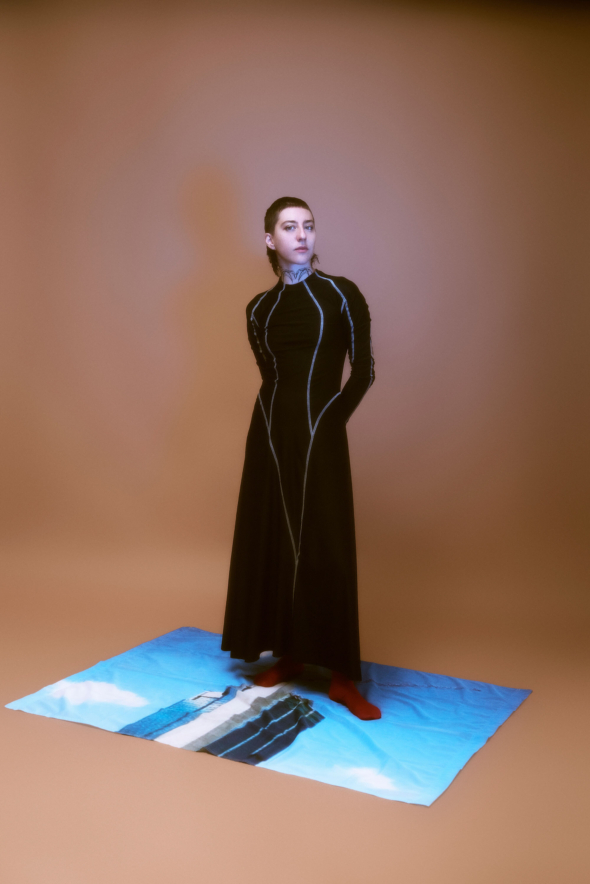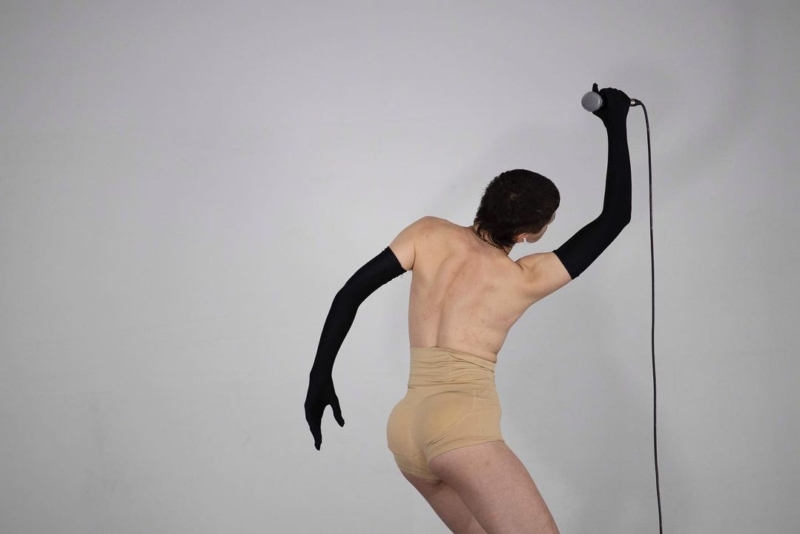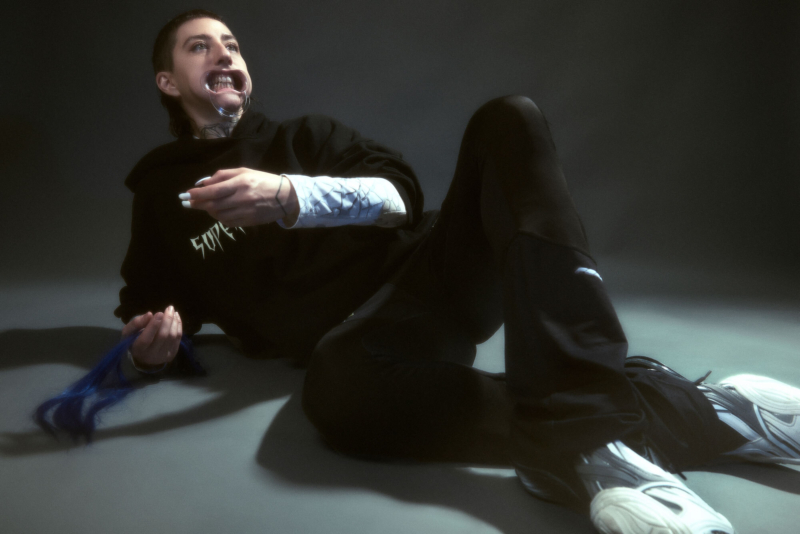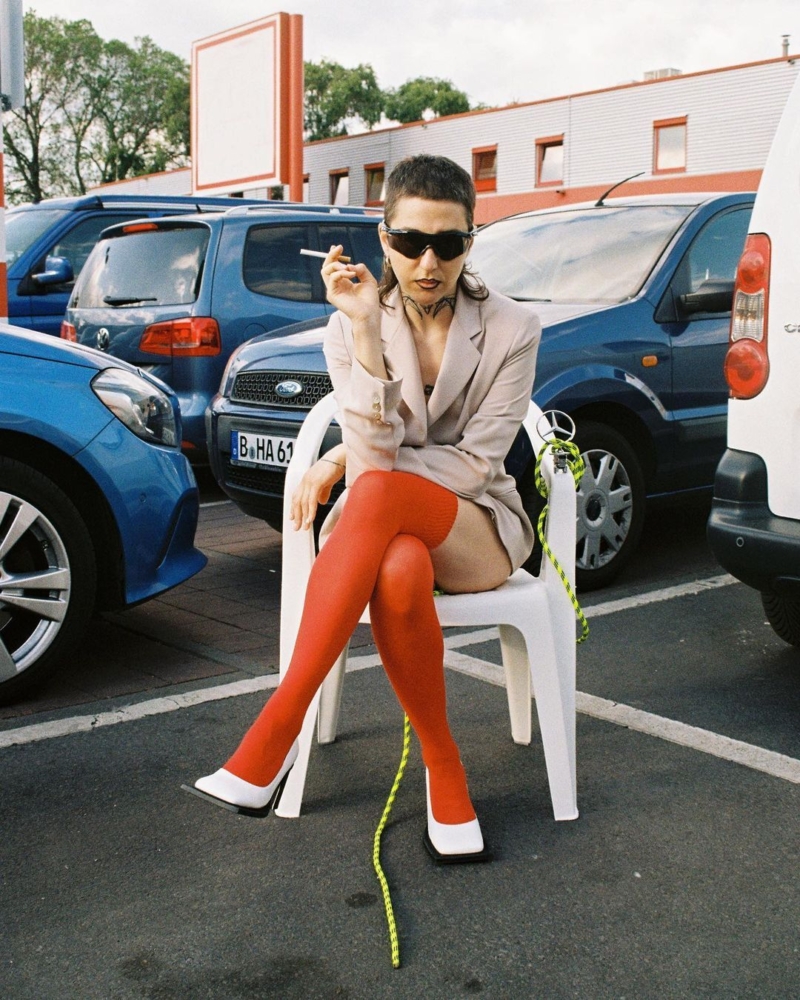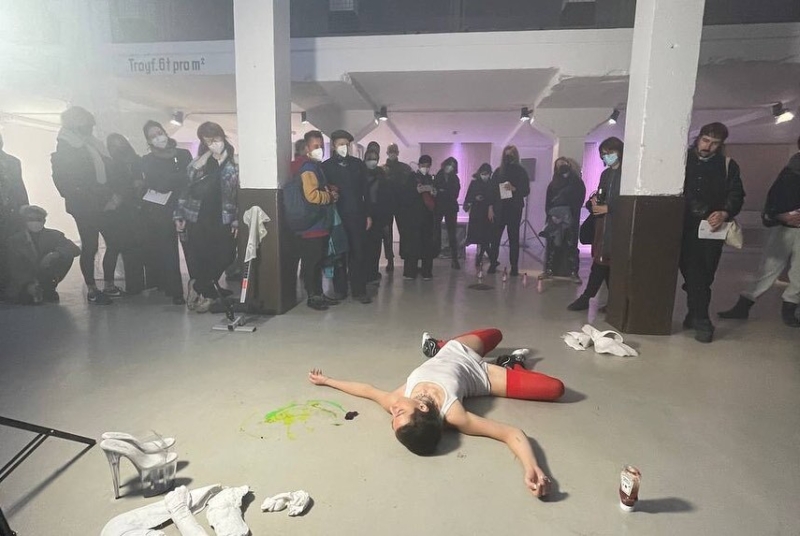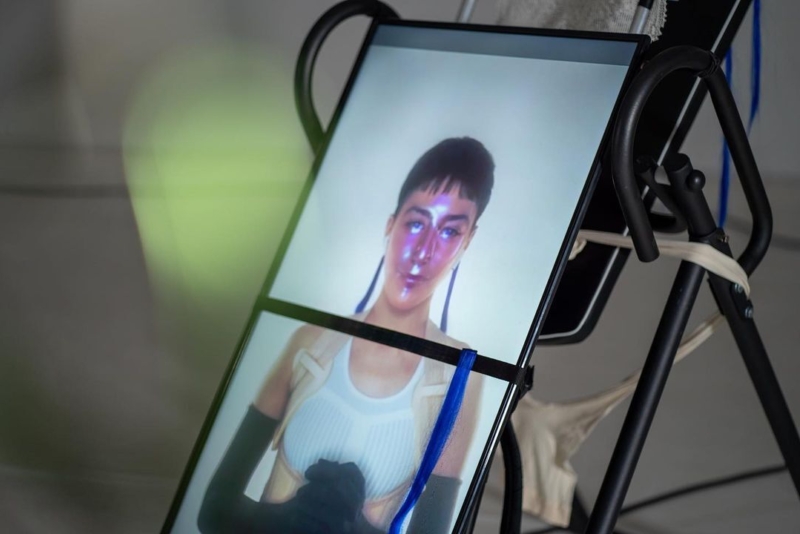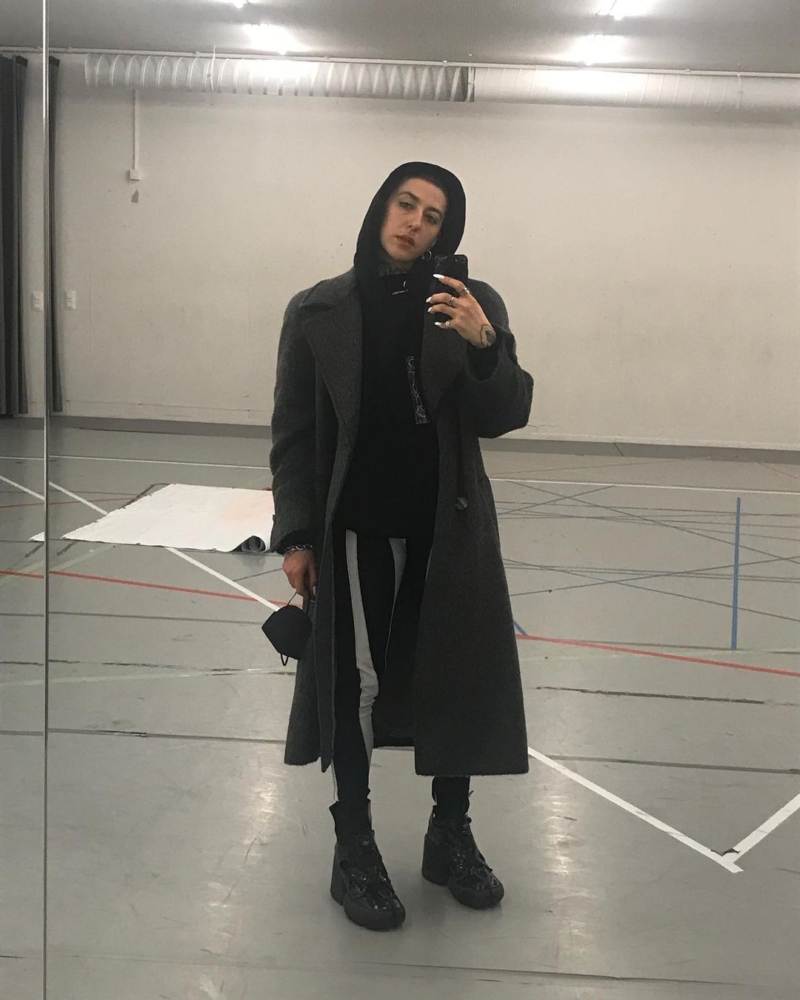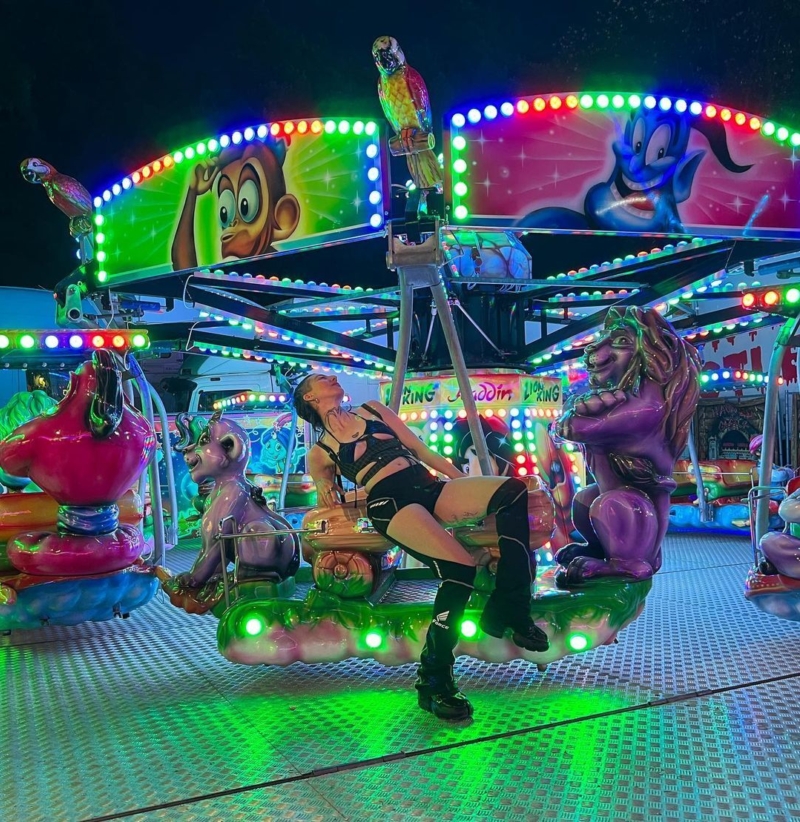Göksu Kunak
Kunak is exploring an Eastern futurism based on their experiences growing up in Turkey.
As a queer, anti-fascist performance artist from Turkey, Kunak’s works reflect on the auto-censorship which accompanies them and their artmaking. Growing up amid political suppression and now living in Berlin, their works deal with the performative signifiers of contemporary lifestyles. Kunak studies the way that the patriarchy injects banality as an everyday phenomenon. Normative patriarchal structures are broken down and given a makeover to inspire new realities that expose the problems of the old, for example by experimenting with kuir camouflage. One of Kunak’s key influences is Arabesk culture, urban development in Turkey, the resultant suppression of minorities and the residual self-censorship it imparts on the suppressed. Arabesk is a genre of music that emerged in Turkey towards the end of the 1960s and became popular among rural migrants. Mixing Turkish classical (Türk Sanat Müziği) and folk with Egyptian and Western elements it came to symbolise the entire migrant culture that inspired it. Arabesk outlines the relationship between Turkish modernity and Westernisation and its many contradictions and absurdities. Kunak’s works form a response to the capitalist modernisation process and its tension with Orientalism and Self-Orientalisation – the perception of ‘Eastern’ and how they see themselves through this construction. Kunak is helping define Turkish Eastern-futurism by combining speculation and science-fiction, history and fantasy into new methodologies for artmaking.

A very popular morning show on Turkish TV, whose audience is mainly made up of housewives…is a very kitsch program, both in the scenography and in the themes: they sing, they talk about cooking, about hemorrhoids, about clothes.
South West Asia (the Middle East) is often perceived as coming from the past, a place never quite catching up with modernity.
As a non-native English speaker, Kunak plays with words and syntax to create their works, either in the blissful malevolent monotone voiceover behind performance works such as “Fire for Interiors” or through open-ended emblazoned fabric pieces such as “Suddenly.” The subversive use of imagery and semiotics is continued in the print works “Kiss”, “The First Lady” and “Crane” which draw on different eras of Turkish political history. These flags depict a notorious kiss between two queer Turkish divas of the 1970s, a bringer of the market economy Prime Minister Turgut Özal’s wife and a crane abandoned in a hotel that became symbolic of the city of Ankara. As Kunak illustrates, South West Asia (Middle East) is often perceived as coming from the past, a place never quite catching up with modernity. Kunak however is a part of the future. Their work ‘Saadet’ meaning ‘happening’ is a video work inspired by meditation and psychology apps. In the distant present, the app aims to bring calm and mindfulness to South West Asia (The Middle East) with guided journaling and AI-driven emotional analysis. The work is a fount of Arabesk kitsch, with its jarring slogans and paradise-reaching advertisements it presents a disturbing balance between image and reality, a way of breaking free from the culturally programmed conceptions hidden in something as innocuous as daytime TV.
Text by Constance Chester
I am interested in the effects of the patriarchy in the passing of ordinary moments.
Biography Göksu Kunak
born 1985 in Ankara, Turkey
Education
MA History in Art, Modern and Contemporary Period, Hacettepe University, Ankara, Turkey (Thesis: «Representation of the Female Body: Popular Culture and Art (1970-1980)», Instructor: Prof. Dr. Zeynep Yasa Yaman)
BA Interior Architecture and Environmental Design, Bilkent University, Ankara, Turkey
Performances, Exhibitions and Readings (selection)
2023
Untitled (Dhikr) curated by Leon Kruijswijk (SOLO) (upcoming, location and time tba)
Ajaib Mahluqat (Acayip Mahlukat) performative installation at Sophiensaele Berlin (upcoming, May 11-14)
PETROL installation as a part of the group exhibition Realities Left Vacant at Neuer Berliner Kunstverein (upcoming, March 10)
CLICHE performance and installation as a part of CARPARK exhibition (an abandoned car repair studio) (upcoming, February 19, 7 p.m., location tba)
WOOF performance as a part of FALLING OF THE FACE OF THE EARTH curated by The Fairest at Trauma Bar und Kino Berlin (upcoming, February 9, 9 p.m.)
Ajaib Mahluqat performance Gessnerallee Zurich Residency Showing (upcoming, February 4, 6 p.m.)
2022
AN(A)KARA, Kaaitheater Brussels, Belgium
niche I: Landscape performance as a part of the exhibition UFFICIO DELLA NOTTE, Last Tango, Zurich, Switzerland
PETROL, performative installation during Musik Installationen Festival Nürnberg, Neues Museum Nürnberg, Nuremberg, Germany
AN(A)KARA Radiant Nights #8 De Singel Arts Centre, Antwerp, Belgium
2021
Far Away From the World, performative installation at ArtDate The Blank Contemporary Art Bergamo, Italy
AN(A)KARA and its ruins, performative talk, Goethe Institut Bucharest, Romania
AN(A)KARA and its ruins, performative installation, Montag Modus Berlin, Germany
O, group performance by IASA, Hamburger Bahnhof, Berlin, Germany
AN(A)KARA performative installation, Sophiensäle, Berlin, Germany
Cabaret Portrait: Döner Blackout III at the Live Works Summit 2021, Centrale Fies, Trentino, Italy
Saadet. Better YOU, Next Waves #16, Theater Volksbühne, Berlin, Germany
Contribution for Laboratory of Contested Space / Art & Truthtelling (curated by JUNGE AKADEMIE), John Heartfield – Photography Plus Dynamite, Academy of Arts (Akademie der Künste), Berlin, Germany
2020
Cabaret Portrait: Döner Blackout III, Open Studio Performance, Centrale Fies, Dro, Italy
Awake!, video in the John Heartfield exhibition curated by Junge Akademie, Akademie der Künste, Munich, Germany
2019
Cabaret Portrait: Döner Blackout II, KW Institute for Contemporary Art, Berlin, Germany
Bergen: The Woman of Agonies, The Parliament of Bodies, Bergen, Norway
2018
When we were kids, To CAMP – One week of living, working and performing, Center of contemporary art (Centre d'Art Contemporain Genève), Geneva, Switzerland
Heavy as frost and deep almost as life (audio), House of Wisdom at Bonington Gallery, Nottingham, UK
2017
when they take it all from us (collective memorizing), performers: Lulu Obermayer and Xenia Taniko Drettmann, House of Wisdom at DZIALDOV, Berlin, Germany
2016
How I became the bitch that I am right now, lecture performance, Bâtard Festival, Brussels, Belgium
2014
Apartment Project 2+1, HACK and the CITY, exhibition and residency, Ludwigshafen, Germany
Prizes, Grants & Residencies
2023
Berlin Program for Artists Participant (grant)
Hauptstadtkulturfonds 2023 for Acayip Mahlukat Sophiensaele Berlin (grant)
2022
Prozessförderung Fonds Darstellende Künste 2022-2023 for Untitled (Zikir) (solo exhibition curated by Leon Kruijswisk) (grant)
Freischwimmen Performance Grant (until 2024)
Visual Arts - Work Stipend 2022 Berlin Senate for Culture and Europe
HAU - Hebbel am Ufer and Fonds Daku #TakeHeart Research Grant
PACT Zollverein Residency, Essen, Germany
2021
Dieter-Ruckhaberle-Förderpreis (prize nomination; finalist)
Visual Arts Research Stipend, Senate Department for Culture and Europe, Berlin, Germany
Akademie der Künste Young Academy Stipend
#TakeCare Grant, Performing Arts Fund (Fonds Darstellende Künste), Berlin, Germany
Individual project funding for AN(A)KARA, Senate Department for Culture and Europe, Berlin, Germany
2020
Visual Arts Research Stipend, Senate Department for Culture and Europe, Berlin, Germany
Works by Göksu Kunak
-
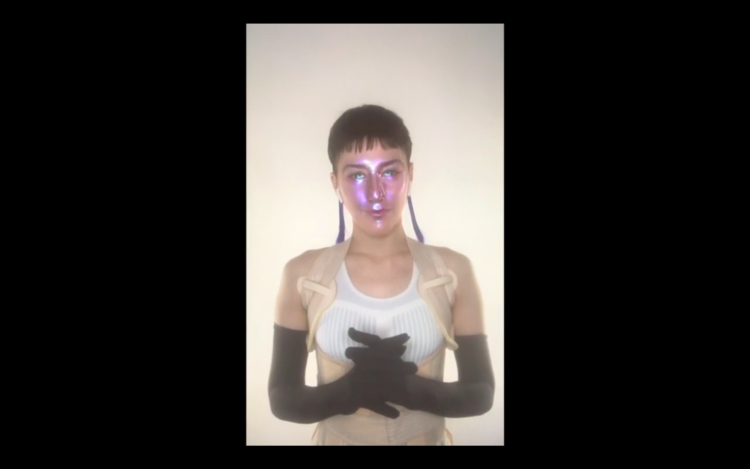
I can't do anything about the feeling of coziness and safety
2022 / Video, 2' /
-
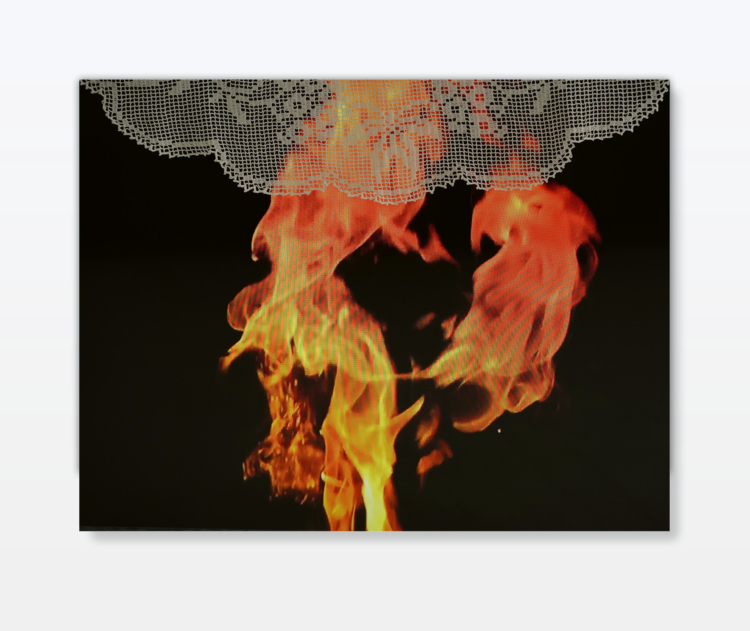
A domestic fire
2022 / Print on Hahnemühle Photo Silk Baryta mounted on Alu Dibond / 50 x 75 cm / 19.7 x 29.5 in
-
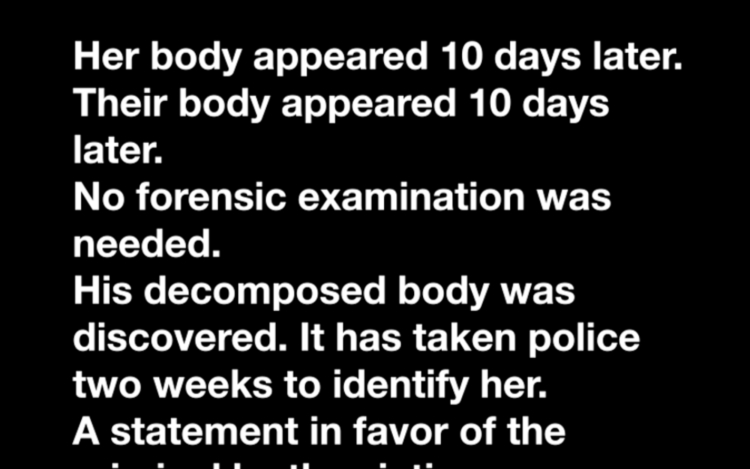
Found. Shot with a pump rifle
2019 / Video with text, 11' /
-
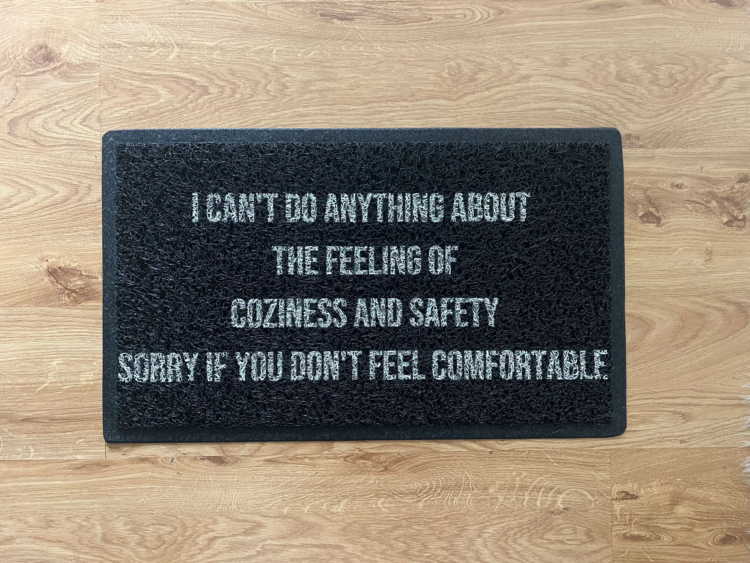
I can't do anything about the feeling of coziness and safety
2022 / Doormat made out of plastic / 40 x 67 cm / 15.7 x 26.4 in
-
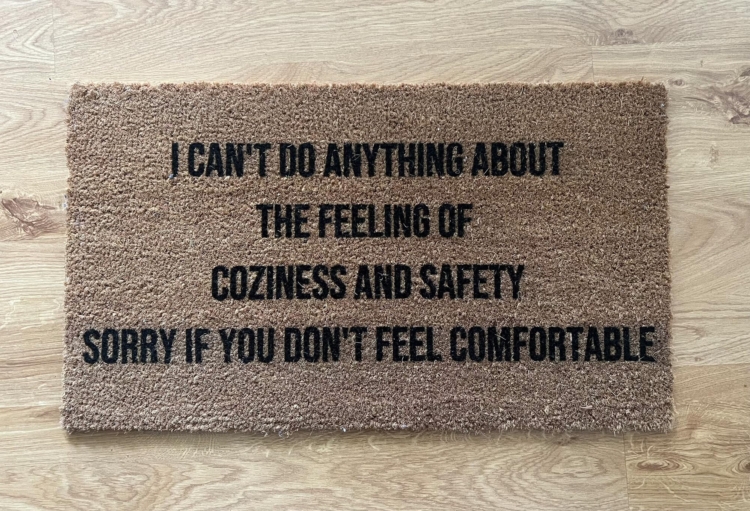
I can't do anything about the feeling of coziness and safety
2022 / Doormat made out of coconut fiber / 40 x 70 cm / 15.7 x 27.6 in
-
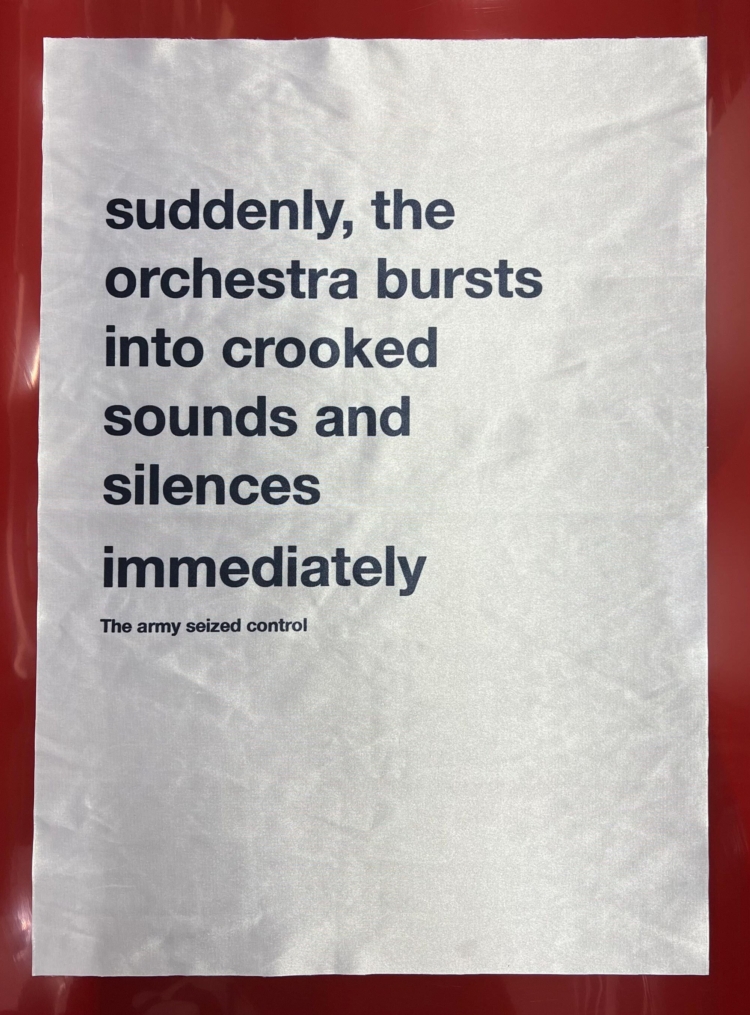
Suddenly
2022 / Print on fabric / 59 x 42 cm / 23.2 x 16.5 in
-
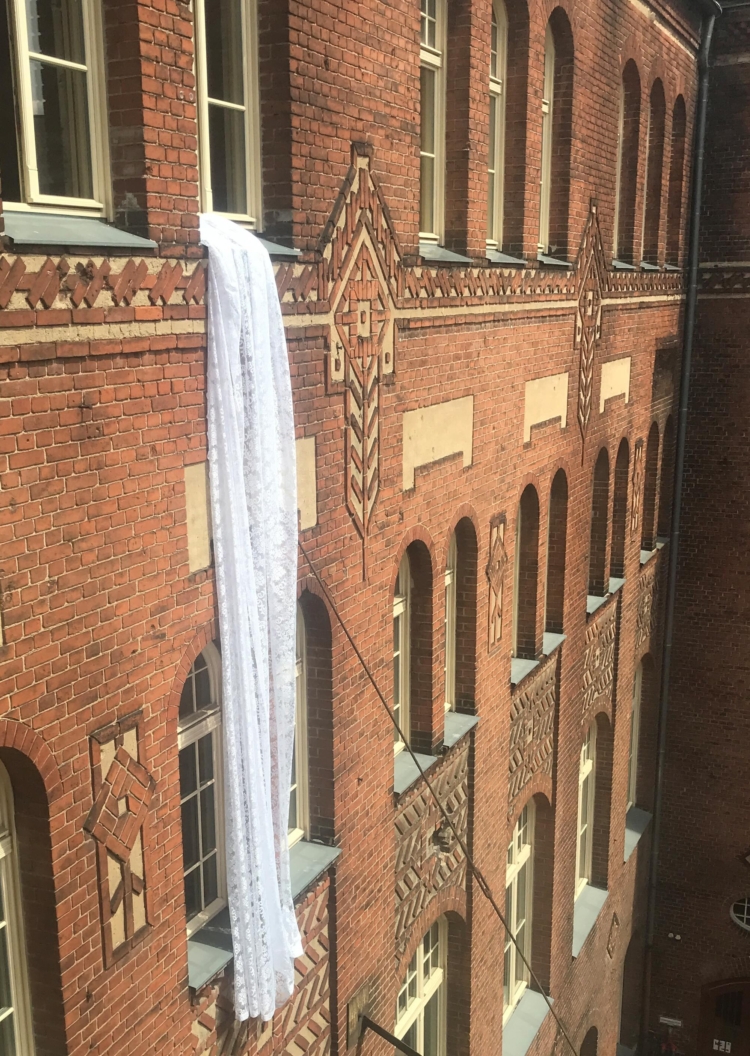
The Curtain
2021 / Ornamented polyester tulle / 600 x 280 cm / 236.2 x 110.2 in
-
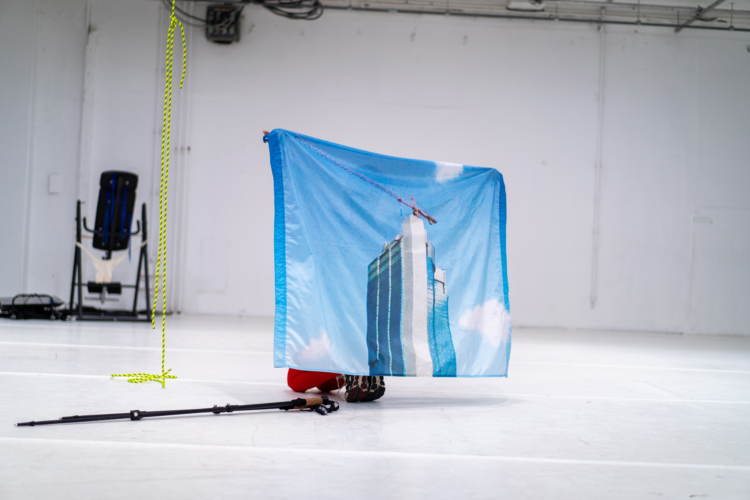
Crane
2021 / Print on fabric / 100 x 140 cm / 39.4 x 55.1 in
-
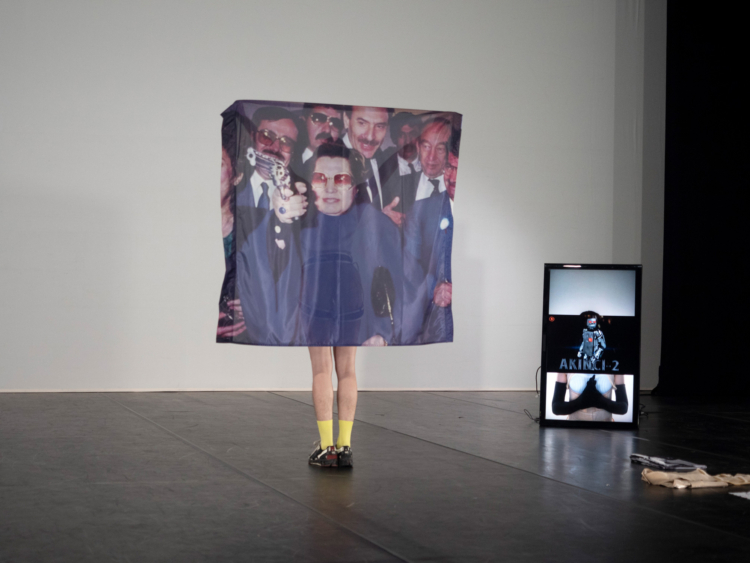
The First Lady
2021 / Print on fabric / 125 x 125 cm / 49.2 x 49.2 in
-
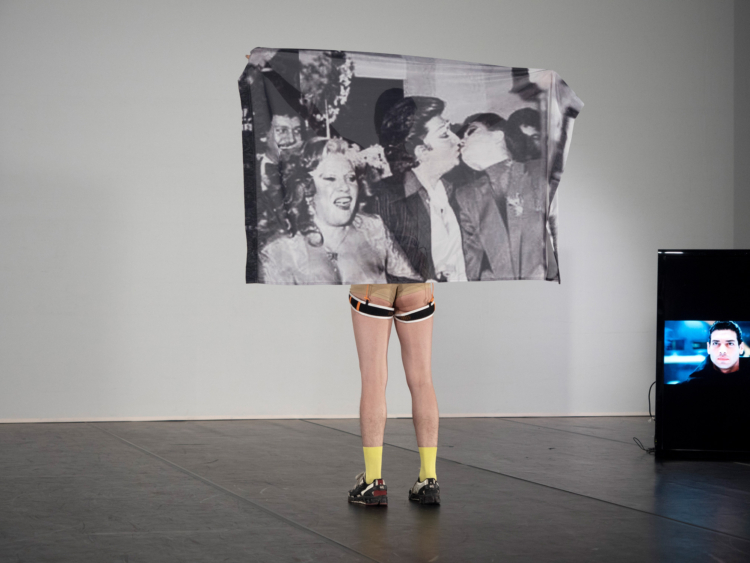
Kiss
2021 / Print on fabric / 100 x 150 cm / 39.4 x 59.1 in
-
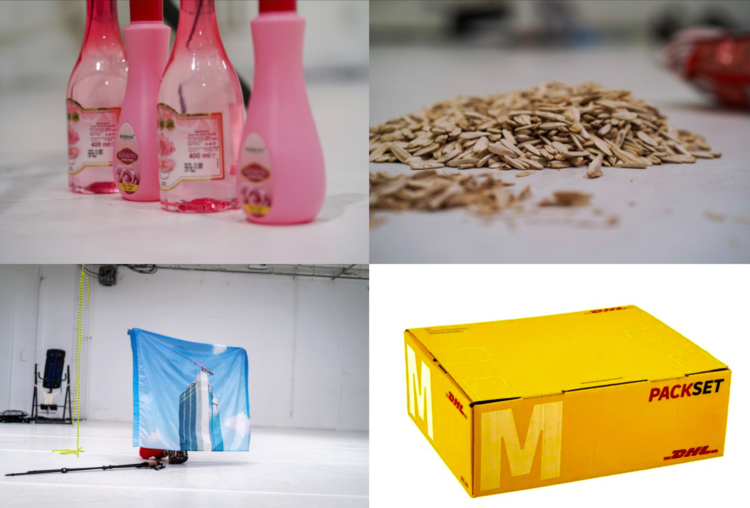
Side-road pausing box
2021 / DHL cardboard box, rose water, sunflower seeds, print on fabric (Crane, 2021) / 36.9 x 28.8 x 12.6 cm / 14.5 x 11.3 x 5.0 in
It is a bias of the so-called Western point of view which tends to conceive the East according to a series of stereotypes. Auto-orientalism, on the other hand, is the point of view of the the people from Turkey themselves, who identify with this stereotypical conception: there is a whole rhetoric about the idea of wanting or being able to be 'like Westerners.
